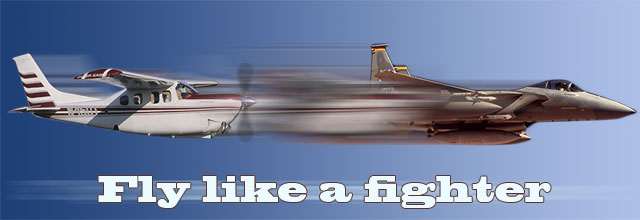 About halfway through my primary training in the T-37, with only about 50 hours of total flight time, I had a dual training sortie with my assigned instructor pilot. We first flew to the auxiliary airfield for traffic pattern work, then went to the military operations area to practice stalls, spins, and acrobatics.
About halfway through my primary training in the T-37, with only about 50 hours of total flight time, I had a dual training sortie with my assigned instructor pilot. We first flew to the auxiliary airfield for traffic pattern work, then went to the military operations area to practice stalls, spins, and acrobatics.
 At bingo fuel we were cleared for our descent to the home field for landing. This would be one pattern to a full stop. I went to idle power and nosed over for the descent. Passing 3,000 feet and only 9 miles from the field, smoke started coming out from between the seats. My first thought was, “Is this really happening?” I was so close to completing the sortie, and this just wasn’t on my lineup card for my planned sequence of maneuvers for the flight.
At bingo fuel we were cleared for our descent to the home field for landing. This would be one pattern to a full stop. I went to idle power and nosed over for the descent. Passing 3,000 feet and only 9 miles from the field, smoke started coming out from between the seats. My first thought was, “Is this really happening?” I was so close to completing the sortie, and this just wasn’t on my lineup card for my planned sequence of maneuvers for the flight.
When I realized it was real, and the smoke was not dissipating, the good old adrenaline kicked in, my heart rate spiked, a knot appeared in my gut, and the bandwidth pipeline to my brain started constricting. I had been given endless emergencies in the simulator up to that point; I was verbally quizzed on at least one emergency procedure after every flight; and I had to stand at attention numerous times in front of all of my classmates and instructors while being grilled about how I would handle a variety of emergencies. That training paid off, as I was slowly able to calm down and gain access to enough brain cells to continue to function. Plus, that was about the time my instructor took control of the jet to figure out what was going on.
We both selected 100 percent oxygen for our masks, and my instructor pilot declared an emergency. Confirming white smoke, we looked around the cockpit for its source but could only tell that it was coming from under the floor. My instructor pilot had me open the checklist while he continued to fly. All of the engine instruments and the electrical load meters were normal. He then switched the air source to “vent” which brought in outside air and helped clear the cockpit. This also helped reduce the burning in our eyes.
For most emergencies we were taught to fly a straight-in approach, but my instructor pilot wanted to get on the ground ASAP so he flew an overhead pattern. We stopped straight ahead on the runway and did an emergency ground egress—ejection seat pins in; seat belt and shoulder harnesses off; canopy open; then get out of the jet and run away toward the grass without getting the parachute or body parts tangled up on anything. And don’t get run over by any emergency vehicles (we actually briefed that).
We were on the ground and out of the jet less than 5 minutes from the time the smoke appeared. This meant there wasn’t much time to analyze, get to the appropriate checklist, and react to the situation. Every now and then I read through my own Cessna P210 checklist, not only to review each emergency procedure, but also to be able to find each page quickly. You never know when you might have one of those days where you would prefer to be on the ground wishing you were in the air, rather than being in the air wishing you were on the ground.
Our maintenance crew later discovered that a fuel pump had fried itself. I still have the paperwork: Labor cost, $84. Parts cost, $10,310. Experience gained, priceless.
Larry Brown of Colorado Springs, Colo., is a retired Air Force F-15 pilot who is using the lessons he learned as a fighter pilot as a GA pilot in his Cessna P210. Brown, who has 2,900 hours total time during his 35 years of flying, also was an instructor pilot and flight examiner in the Air Force T-38 and instructor pilot in the T-52, the military’s version of GA’s Diamond DA40. See previous installments of “Fly like a fighter.”



